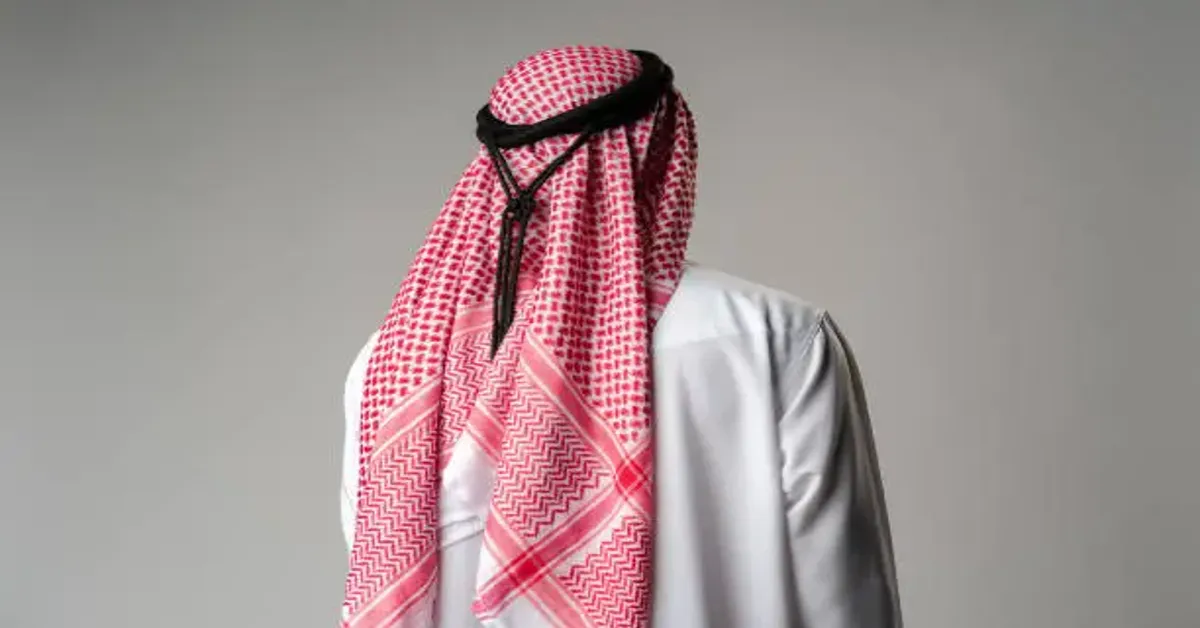In today’s globalized world where tradition meets innovation, the keffiyeh and shemagh stand out not merely as garments but as culturally charged symbols. These iconic Middle Eastern scarves, though similar in appearance, are distinct in origin, meaning, and modern relevance. Whether seen in a protest, on the runway, or worn by soldiers in arid environments, the keffiyeh and shemagh have evolved far beyond their utilitarian roots. This article explores their origins, key differences, historical significance, and their adoption across cultures—clearly outlining what they are, what they mean, and why they matter today.
What is a Keffiyeh?
The keffiyeh, also known as kufiya or ḥaṭṭah, is a traditional Arab headdress made from cotton or cotton-blend fabric, typically woven with a checkered pattern. It is most commonly associated with Palestinian identity but is widely worn across the Middle East and North Africa. While its historical function is to provide protection from sun and sand, it carries profound political and cultural symbolism today.
What is a Shemagh?
The shemagh is a type of scarf similar in form to the keffiyeh but often associated with Bedouin tribes, Jordanian military, and Western militaries operating in desert climates. It’s primarily a utilitarian garment used for protection from sun, dust, and cold. The term “shemagh” is more common in the West and military contexts, while in Arab countries, the term “keffiyeh” is more culturally resonant.
Origins and Historical Background
The history of the keffiyeh can be traced back over a thousand years. It was traditionally worn by farmers and villagers in Mesopotamia, predating Islam. The shemagh, often considered a derivative or regional variant, emerged as a practical head covering for nomadic tribes traversing harsh desert climates. While both garments served practical needs, their evolution diverged due to regional identities, colonial histories, and political movements.
The keffiyeh gained global attention during the 20th century, especially in the wake of the Palestinian liberation struggle. It became a symbol of resistance when worn by leaders like Yasser Arafat, who popularized the black-and-white patterned keffiyeh globally. In contrast, the shemagh remained more functionally associated with military operations, particularly during the Gulf Wars and the War on Terror.
Cultural and Political Symbolism
In Palestinian culture, the keffiyeh represents national identity, resistance, and solidarity. It’s more than a scarf—it’s a statement. The black-and-white pattern is most commonly associated with the West Bank, while red-and-white variations are associated with Jordan or Bedouin groups.
For many, wearing a keffiyeh in political protest—whether in Gaza, Ferguson, or Paris—is a visual shorthand for anti-imperialism and solidarity with oppressed peoples. Conversely, the shemagh has not acquired the same political weight, though it sometimes overlaps in protest imagery due to visual similarity.
Material and Design Differences
Though often confused, the keffiyeh and shemagh differ in both material composition and design motifs:
- Keffiyeh: Typically 100% cotton or cotton-wool blend. Features woven checkered patterns, sometimes with intricate fringes.
- Shemagh: Made from heavier cotton or polyester-cotton blends for durability. Usually less ornate, more utilitarian, with simple patterns or solid colors.
Some keffiyehs are still handwoven in traditional looms, especially in places like Hebron. Meanwhile, shemaghs are mass-produced for military and commercial use, often in China or Pakistan.
Use in Military and Tactical Settings
The shemagh gained prominence in military settings, especially during the Iraq and Afghanistan conflicts. Western soldiers began using it as a tactical scarf—offering camouflage, sun protection, and warmth. Its versatility made it a favorite in special operations forces.
While the keffiyeh can also be used in this way, its political implications make it less common in Western militaries. However, some paramilitary and resistance groups across the Middle East intentionally adopt it for its symbolic power.
Global Popularity and Fashion Integration
From streetwear to haute couture, the keffiyeh has found its way into global fashion. Designers have used it in scarves, shirts, and even dresses—often divorced from its cultural meaning. In 2007, Urban Outfitters released a keffiyeh-style scarf that sparked backlash for cultural appropriation. The shemagh too has seen commercial popularity, especially in outdoor and survivalist fashion circles.
Yet, this rise in popularity often raises ethical questions: Is it just a pattern, or a political symbol?
Ethical and Cultural Sensitivities
Wearing a keffiyeh or shemagh without understanding its context can be problematic. Cultural appropriation—where sacred or politically meaningful garments are reduced to trends—remains a persistent concern. Palestinians especially criticize the commodification of the keffiyeh by brands that do not acknowledge or support their struggle.
Consumers and designers alike are increasingly called to educate themselves about the origins and meanings of the garments they showcase.
How to Wear and Style Them
Traditionally, both garments are worn draped over the head and shoulders, with agal (black cord) to secure it in place. In military use, the shemagh is wrapped like a face mask or head wrap. Today, there are myriad ways to style these scarves:
- Classic Wrap: Folded into a triangle and wrapped around the neck.
- Head Wrap: Protection against sandstorms or sun.
- Urban Style: Draped loosely around the shoulders with casual wear.
Each variation not only serves a function but can also communicate identity or solidarity, depending on how and where it’s worn.
Modern Relevance in Global Protests
The keffiyeh has become a staple in global protests—from Occupy Wall Street to pro-Palestine demonstrations. For many, it symbolizes resistance, anti-colonialism, and solidarity with marginalized groups. In recent years, its use surged again amid Israel-Gaza conflicts, drawing both support and criticism depending on the viewer’s political stance.
The shemagh, while visually similar, appears more often in environmental activism or survivalist circles, but it lacks the same ideological associations.
Keffiyeh and Shemagh in Media and Pop Culture
In movies, music videos, and journalism, these scarves often serve as visual shorthand for “the Middle East.” Unfortunately, they’re also frequently misused or portrayed stereotypically—reinforcing orientalist tropes.
However, artists from the region are reclaiming these images. Palestinian rapper DAM, for example, wears the keffiyeh in his performances to assert cultural identity and resistance.
Manufacturing: Traditional vs Modern Production
The last remaining keffiyeh factory in the Palestinian territories, the Hirbawi factory in Hebron, has become a symbol in itself. As mass production threatens traditional methods, supporting authentic producers becomes both an economic and political act.
In contrast, the shemagh market is dominated by manufacturers in Asia, where labor costs are lower and production is faster. This distinction has implications for both authenticity and economic sustainability.
Economic Impact in Middle Eastern Communities
For many artisans, especially in Palestine and Jordan, weaving and selling keffiyehs and shemaghs provide crucial income. Tourists buying from local markets directly support these communities. But counterfeit products and large-scale exports from outside the region threaten these traditional economies.
Campaigns like “Buy Local, Wear with Purpose” aim to re-center authentic craftsmanship and cultural integrity.
The Role of Diaspora in Reviving the Keffiyeh
Diaspora communities, especially in Europe and North America, have played a vital role in re-popularizing the keffiyeh. They wear it not only to maintain cultural ties but also as a political statement in places where their voices are often marginalized. For younger generations born abroad, it becomes a way to reclaim identity, history, and belonging.
Comparing Functionality: Desert to Urban Use
- Keffiyeh: Lightweight, breathable—ideal for hot climates and symbolic settings. Better suited for ceremonial, cultural, or protest use.
- Shemagh: Thicker and sturdier—ideal for rough terrains and tactical environments. Favored by hikers, military, and survivalists.
In essence, both serve similar protective functions, but their context dictates their primary use.
Future of the Keffiyeh and Shemagh
As global movements for justice, sustainability, and cultural integrity grow, the keffiyeh and shemagh may become even more prevalent. Future trends point toward greater transparency in manufacturing, resurgence of traditional weaving, and recontextualization in art and academia.
These scarves are no longer just about keeping the sand out of your eyes—they’re about telling a story, taking a stand, and weaving heritage into the present.
Conclusion: Threads of Identity and Resistance
In the swirling debates of identity, politics, and culture, the keffiyeh and shemagh remain potent emblems. They are, at once, tools of survival and banners of resistance. Their patterns tell stories not only of sandstorms and sun, but of struggle, dignity, and pride. In understanding the difference—and the shared heritage—of these scarves, we see how fabric can become a flag, a voice, and a bridge across worlds.
FAQs
1. What is the main difference between a keffiyeh and a shemagh?
While both are square scarves used for protection, the keffiyeh is traditionally Palestinian with cultural and political symbolism, often featuring a black-and-white or red-and-white checkered pattern. The shemagh, on the other hand, is more commonly used by military forces and in desert climates, valued primarily for its functionality rather than cultural meaning.
2. Is it culturally appropriate for non-Middle Eastern people to wear a keffiyeh or shemagh?
It depends on context and intent. Wearing a keffiyeh as a political statement or in solidarity with Middle Eastern struggles is generally accepted. However, using it purely as a fashion accessory without understanding its significance may be viewed as cultural appropriation.
3. Are the patterns on keffiyehs symbolic?
Yes. The patterns on keffiyehs often hold symbolic meanings. For example, the black-and-white fishnet pattern on Palestinian keffiyehs is said to represent resistance and connection to the land. Different regions and groups may have specific styles that carry historical or political connotations.
4. Can a shemagh be used in cold weather or just in the desert?
A shemagh is highly versatile. While originally designed for sun and sand protection, its thicker fabric makes it useful in cold environments as well. It is often used by soldiers, hikers, and outdoor enthusiasts for warmth, dust filtration, and concealment.
5. Where can I buy an authentic keffiyeh or shemagh?
For authenticity, purchase from local Middle Eastern artisans or cooperatives, especially in places like Palestine (e.g., Hirbawi factory). Many online retailers now also offer ethically sourced options, but it’s important to verify their origin to support traditional craftsmanship and avoid mass-produced imitations.
Ask ChatGPT







